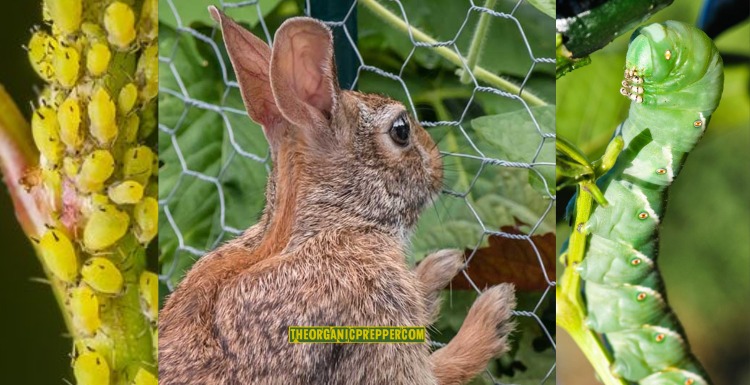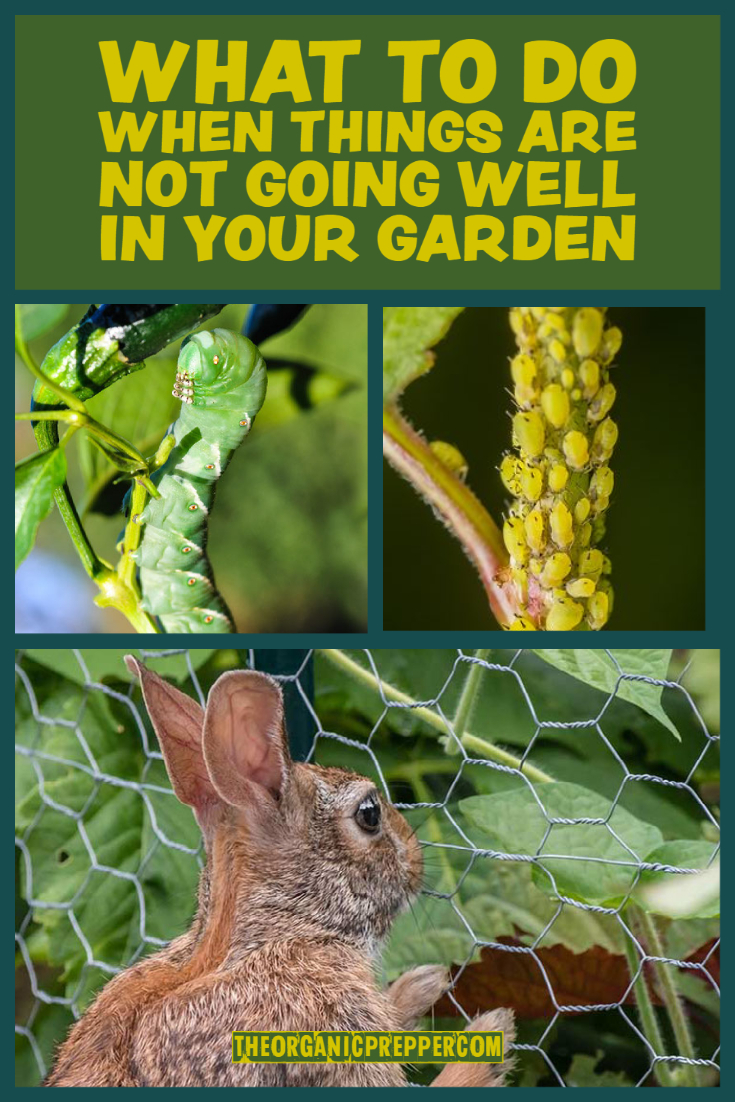
If you’re brand-new here, you might wish to sign up for my RSS feed. Thanks for checking out!
(Psst: The FTC wants me to advise you that this site contains affiliate links. That means if you make a purchase from a link you click, I may get a little commission. This does not increase the rate you’ll pay for that product nor does it decrease the awesomeness of the item. ~ Daisy)
by Jayne Rising
So, things are not going well in your garden and you aren’t rather sure what to do. Perhaps the plants aren’t growing, or the fruits have issues, and production seems low. The primary step towards a proper resolution includes identifying the specific issue, consisting of a little investigator work.
Environmental Conditions
How’s the weather? Wet conditions, whether hot or cold, are very conducive to disease. Illness can be bacterial, fungal, or viral. Various illness will require different solutions.
What’s the date? Insects such as squash vine borers have a specific life cycle. (To avoid the issue, plant when the vine borer isn’t laying eggs.) Get assist with dates, garden planning and more at Seeds for Generations.
It wouldn’t injure to evaluate your soil pH since if the soil is too acidic or standard, the plant won’t take up the nutrients. Commercial chemical tests fast and simple. Be aware that these aren’t as precise as lab screening but will get you an excellent estimate.
How is the problem spreading? Is it spreading throughout the landscape or within the plant?
Plant Morphology-Symptoms and Indications
To start with, what is the plant exactly? Tomatoes have different problems than strawberries do, for example. Searching for problems typical to the specific plant is a fantastic place to begin fixing.
Look at the plant. Do you see holes in the leaves or stems that seem bitten off or boreholes? Little, round holes might be common insect predation, whereas entire leaves chewed might be caterpillars or perhaps the feared Japanese beetle. Little insects taking a nibble will not hurt anything, however caterpillars which beetle can completely remove your plant. While Japanese beetle damage is unpleasant, it won’t really eliminate the plant. What a caterpillar can do depends upon the caterpillar. Camping tent caterpillars, for instance, can kill many trees and are thought about an invasive types. Boreholes in squash might be the squash vine borer. A bitten stem could be a bunny or other rodent predation. Bunnies will remove your plants to the stems and should be dealt with appropriately! (I understand this from experience. See Lessons in gardening below.)
Damping-off
Damping-off is typically a seedling issue, and when it occurs, there’s absolutely nothing to be done but begin over. The causal organism is generally Phytophthora, a nasty bacterial genus with many unfriendly species. The seedling will appear to be growing up until it simply wilts, normally at the soil line. Toss the diseased plants, wash your pots out with bleach, and attempt again.
Leaf Morphology
Take a look at the leaves. Are they healthy and green? If not, how do the plants look? Keep in mind any areas and specifically what those areas appear like, i.e., yellow with black or brown rings. Be as specific as possible.
- Do you see bugs on either side or eggs?
- Are the afflicted leaves older, towards the base of the plant, or brand-new growth?
- Are the veins affected or the leaf in between them or both?
Many nutrition shortages affect the leaves, however so do many other diseases. A great magnifying glass can help.
How About Those stems? Roots? Fruits?
There are several wilt diseases. These assault the plant vasculature, blocking the allegorical pipe and causing the plant to wilt. Some insects, such as squash vine borers, really burrow into the stem. Take a stem, sufficed open, and look inside. Collect a root and see what it looks like. Is it strong & healthy or twisted & tortured looking? Nematodes attack roots. If there are fruits, are they healthy or rotten? Document precisely what you see.
You Know Why Things Are Not Going Well in Your Garden. What Now? As soon as you have the symptoms recorded, compare them to pictures of the problems particular to your plant. Read the descriptions. There are plant ID apps that can assist identify issues, however eventually, your best method is easy important thinking combined with powers of reduction.
Some problems are much easier to fix than others, and the particular repair depends upon the problem. Nutrient deficiencies are easy: add the suitable fertilizer. There is a variety readily available, consisting of micronutrient solutions. Numerous organics are readily available.
Disease and Pest Problems Are a Bit More Complicated
Some diseases, such as Septoria leaf spot, powdery mildew, and Verticillium wilt, are extremely aggressive and spread quickly. Organic techniques may not be enough to manage them. This writer when lost 90% of her tomato crop to Septoria. Organic approaches, in this case snipping infected leaves and neem oil, weren’t enough. The following year, cautious use of copper fungicide repaired the problem– ditto for leather rot on strawberries, a fruit rot.
Pesticides, even organic formulations, aren’t actually helpful for the soil fauna. Losing your crop isn’t helpful for your diet plan. If organic techniques can help, go all out. If you need to use chemicals, be really conscious and don’t overuse them. Likewise, be really careful to avoid neonicotinoids, which are poisonous to bees. Fences and netting deal with bunnies and birds. Aphids and vine borers are another matter.
What’s the Distinction In Between Bug Control and Bug Management?
These are two various ideas.
Control is the traditional method and is reactive, dealing with the problems after they are discovered. Control tends towards an over-reliance on pesticides. There are many organic pesticides, such as biopesticides, neem oil, and pyrethrins. Nevertheless, overuse of these items can harm your soil’s ecology and aren’t great for pollinators either.
Management involves preparation strategies, for example, planning your squash plantings to avoid the vine borer. Integrated insect management, or IPM, is a strategy that thinks about the plant’s requirements and environment together with pest biology in the service, enduring some damage and leaving pesticides as a last hope. IPM is a topic for an article in its own right. I recommend looking it up if you’re interested; it’s a fascinating subject! It’s up to the specific to decide which method best suits the requirement.
Lessons in Gardening
Early on in my gardening career, I decided to pursue a second crop of broccoli and cauliflower. I started my seedlings and had them solidified out & ready to go in July when I gathered my first crop. Considering that July is sweltering and brassicas are a cooler crop, I decided to give up the plastic covering I generally would have utilized. That plastic not only makes a good temporary conservatory, it likewise keeps bunnies out of my seedlings until they’re big enough to be left alone. It was too hot, so I left the cover off. My error!
The following day I took a look at my garden, and a fat little rabbit was depending on my bed, chewing away at my brand-new seedlings! It obviously thought it was delighting in a salad bar and was making complete usage of the opportunity. I had never wanted bunny stew more at that moment than I did in my whole life! It chewed my plants down to the stems, and they never ever did return.
Daisy had a similar experience with deer.
Now I fence whatever. Garden and learn.
How’s Your Garden Doing?
Have you been able to ward off the bugs and critters? How about those nasty plant diseases? Share your ideas with other readers on how you successfully (or not) kept your garden growing. Let’s talk gardening in the remarks listed below.
About Jayne
Jayne Increasing is a garden enthusiast and bookworm with a BS from the University of Wisconsin and a Master Garden enthusiast accreditation. She’s been growing food on her little urban lot considering that 2010 and teaching others how to do it given that 2015. She’s associated with a number of local city agriculture initiatives, working to bring a sustainable and healthy food system back into the mainstream.

< img src ="// www.w3.org/2000/svg'%20viewBox='0%200%200%200'%3E%3C/svg%3E" alt="What to Do When Things Are Not Working Out in Your Garden"/ > < img src="https://www.theorganicprepper.com/wp-content/uploads/2021/07/troubleshooting1GARDENpin.jpg" alt="What to Do When Things Are Not Working Out in Your Garden"/ >


